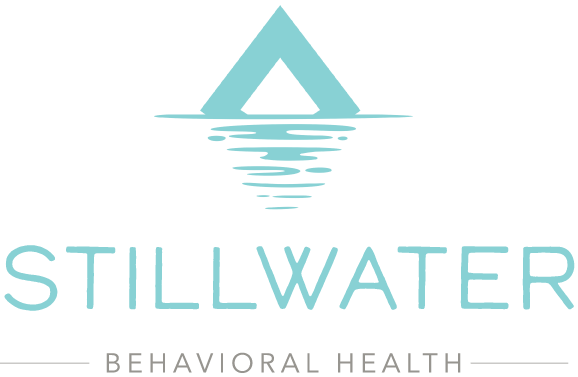Cocaine Addiction
This article outlines the causes of cocaine addiction, cocaine addiction symptoms, cocaine withdrawal, and treatment methods.
What is Cocaine?
You may not have known that cocaine was once an ingredient in the production of Coca-Cola drinks.1 This period was when the effects of cocaine 2 were less known, and it was thought to be harmless. However, the drug became outlawed when those using it began struggling heavily with cocaine addiction. Cocaine is mainly derived from the leaves of a South American plant, coca. The leaves of this plant had been used for centuries in South America to prepare local remedies for various illnesses.3
By 1879, research was being carried out on the medicalization of cocaine, and it became used for treatment by the 1890s. It is a Schedule II drug, and due to its drug class and schedule, physicians can use cocaine for treatment despite it being highly addictive.4
Questions about addiction?
Call Us Now: 1-866-232-9103
Your call is confidential with no obligation required to speak with us.
Why Is Cocaine Addictive?
Someone can become addicted to cocaine quickly even when it is consumed in minimal quantities. This addiction is because of the drug’s brain stimulatory effects in the brain. It affects a part of the brain called the reward pathway associated with brain reward, our levels of motivation, desire, and pleasure. Cocaine addiction leads to a breakdown of the anti-reward pathways responsible for holding back the urge to pursue pleasure. Some cocaine abuse symptoms include the following:
- Changes in sleep patterns
- Extreme meekness
- Depression
- Lack of interest in daily activities
Cocaine is known by several other street names, including coke, white candy, rock, and charlie.
Who Is at Risk of Cocaine Addiction?

Family History
People with a family history of cocaine addiction are at a greater risk of developing an addiction of their own.5 While it has not been proven that cocaine addiction can be genetic, habits can be passed down from parent to offspring. People in dysfunctional families, those whose parents have a history of mental illness, and those whose parents have substance abuse issues often turn to drugs like cocaine as a coping mechanism.
Addiction to Other Substances
Addiction to other drugs such as tobacco, nicotine, and marijuana, known as gateway drugs, can also contribute to cocaine addiction. These gateway drugs lead to alterations in the brain’s neural pathways and lead one to crave other more potent substances.6
Mental Illness
The use of cocaine has adverse effects on the psychological systems of an individual. It could result in symptoms of mental illness such as agitation, hallucination, and even violence. If left untreated, these cocaine addiction symptoms could worsen and leave the person with psychological disorders.
How is Cocaine Used?
Smoking (Freebasing)
Cocaine is ingested in different ways. One of these ways is called freebasing, but this method is also referred to as smoking crack. Crack cocaine is made by mixing cocaine with baking soda, resulting in rocky crystals smoked in a pipe. It is one of the most effective ways of consuming cocaine as freebasing gives someone an intense rush and keeps them high for several hours.
What Is the Difference Between Crack and Cocaine?
Rock cocaine, also known as crack cocaine, is produced from powdered cocaine. Crack is produced so the powdered form of cocaine can be smoked. Crack is made by mixing powdered cocaine with water and baking soda. The mixture is then heated until a crystalline residue is left behind. This residue is crack, and it can be smoked in a pipe. The name crack is derived from the crackling sound it makes as it is heated and smoked.
Shooting Cocaine
Cocaine can also be injected by dissolving in water which goes directly into the bloodstream. This method of using cocaine is referred to as “shooting cocaine.” Shooting cocaine leads to the most intense high of all cocaine consumption methods.
Snorting and Oral Ingestion
Some people ingest cocaine by snorting cocaine in its powdered form, drawing it into the nostrils, where it gets distributed into the bloodstream through the nasal tissues. Others will take the drug orally, usually by rubbing the powder into their gums.
Why Is Cocaine Use on the Rise?
Fentanyl-laced Cocaine
Another cause of cocaine overdose deaths in the US is fentanyl-laced cocaine. This mixture of cocaine and fentanyl is cheaper to produce than pure cocaine while being more potent. It has led to drug dealers selling laced coke as pure cocaine. The brain stimulation of the mixture is far more potent, which has led to several deaths by overdose among people living with cocaine addiction.
Cocaine and Other Drugs
Cocaine is combined with other substances to boost the high dopamine fix, the brain reward chemical. Some substances used with cocaine are listed below:
- Alcohol
- Marijuana
- Heroin (speedball)
Poly-drug use involves the abuse of more than one harmful drug, and it is common among many people who abuse drugs.

Cocaine use symptoms may include anxiety where the person is constantly agitated and unable to be at peace. Another cocaine addiction symptom is paranoia. The individual is left feeling distrustful of everyone and everything.
Those who use cocaine often show addiction symptoms, such as being overconfident, believing they can do anything without thinking of the consequences, and sometimes exhibiting panicky feelings. If you or someone close to you seems to be exhibiting these symptoms, help is available.
Cocaine withdrawal happens when a person who has become dependent on cocaine stops taking the drug. Cocaine withdrawal symptoms can also arise if the individual cuts down on their use of cocaine. Cocaine withdrawal symptoms include:
- Tiredness
- Depression
- Discomfort
- Increased appetite
- Hallucinations
The individual will also experience an extreme craving for cocaine during this period. Treatments are in development to help with the management of cocaine withdrawal symptoms.
Can You Overdose on Cocaine?
How much cocaine does it take to overdose? Studies have revealed that an overdose of cocaine starts at about 96mg of cocaine per kg of body weight. This estimate is subject to several factors, such as the purity of the cocaine, age, and the body’s tolerance to the substance.
Some of the dangers of cocaine overdose are seizures, kidney failure, heart problems, and damaged mental facilities.
Getting Treatment for Cocaine Addiction
Medications
Therapy
Therapy is another reliable cocaine addiction treatment, and it is also helpful in helping patients beat cocaine withdrawal symptoms and tendencies. It can be in the form of contingency management (CM), inpatient/outpatient care, or cognitive-behavioral therapy (CBT). CM is based on a system that rewards the person with the substance abuse problem to abstain. CBT helps to cope with the effects of abstinence and cocaine withdrawal.
Resources
- https://teens.drugabuse.gov/blog/post/coca-colas-scandalous-past
- https://en.wikipedia.org/wiki/Cocaine
- https://www.drugabuse.gov/publications/research-reports/cocaine/what-cocaine
- https://books.google.com/books?id=_Du2bfrO9FwC&q=conditions+of+sea-shipping+from+South+America+could+degrade+the+cocaine+in+the+plant+samples+available+to+European+chemists&pg=PA23
- https://pubmed.ncbi.nlm.nih.gov/12028739/
- https://www.ojp.gov/ncjrs/virtual-library/abstracts/cigarettes-alcohol-marijuana-gateways-illicit-drug-use
- https://www.cdc.gov/drugoverdose/featured-topics/psychostimulant-cocaine-race-ethnic-minorities.html
- https://www.ncbi.nlm.nih.gov/pmc/articles/PMC2994240/


